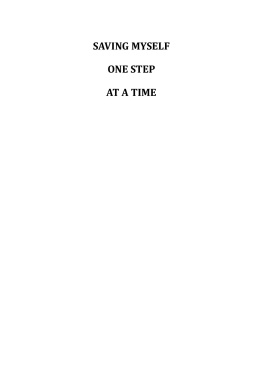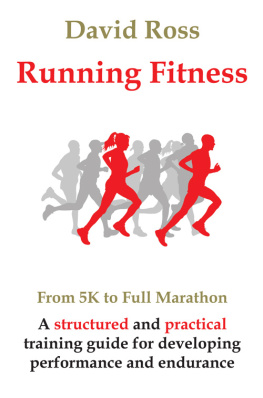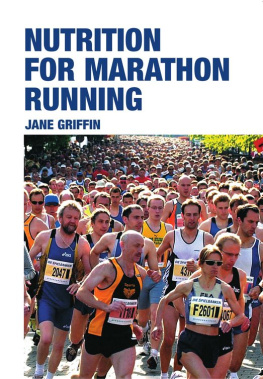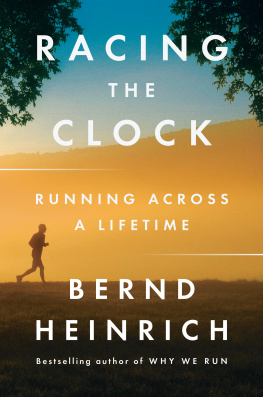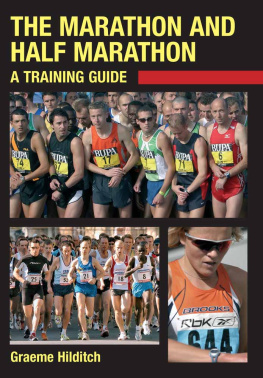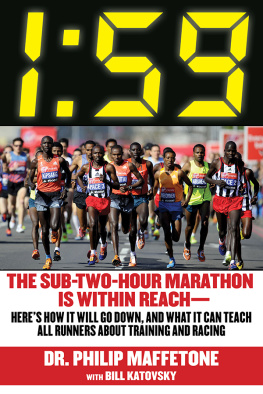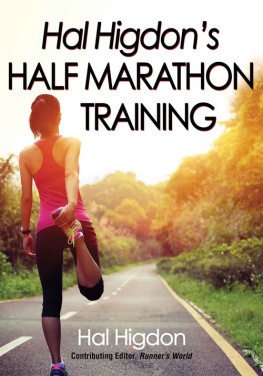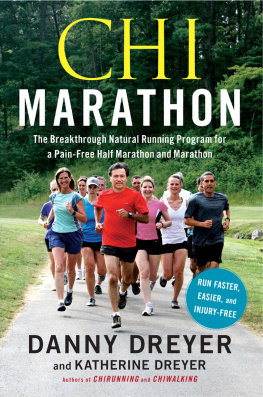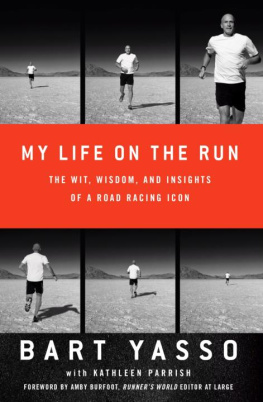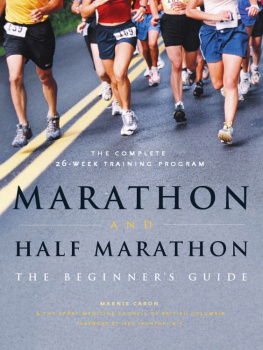SAVING MYSELF
ONE STEP
AT A TIME
SAVING MYSELF ONE STEP
AT A TIME
A RUNNING MEMOIR
T. J. BRYAN

Copyright 2020 by Thelma Jane Bryan
All rights reserved.
ISBN: 978-0-578-76894-6
1. Biography and memoirSports 2. Biography and memoirRunning 3. Biography and memoirWomen runners 4. Biography and memoirAging runners 5. Biography and memoirAfrican-American runners 6. Biography and memoirAfrican-American women runners 7. Biography and memoirRunning to relieve anxiety, depression, despair, and stress
Disclaimers
This memoir contains the authors recollections of past experiences. Some names and characteristics have been changed, some events have been compressed, and most dialogue has been recreated.
This book contains information about running injuries and treatments. Such content is not intended as a substitute for professional medical advice, diagnosis, or treatment. The reader should consult a physician about any symptoms that may require medical attention.
Cover Photo: T. J. Bryan Crossing the Finish Line of the 2011 Boston Marathon
Dedication
To the woman whose strength has inspired me over a lifetimemy Mama, Mary G. Bryan,
and
to my closest friendsDavid G. Preston, my stalwart husband and faithful one-man racing crew, and Bryan D. Preston, our son and my role model for kindness
CONTENTS
Preface
I am an anomaly. A former university chancellor and an African-American woman now in her mid-70s, I became a runner in 2009, when I was 64 years old. I was an unlikely person to begin such a journey. Throughout most of my life, sports did not interest me. Although I participated in aerobics during the 1980s and 1990s, I had exhibited little athletic talent or ability otherwise. Initially, running was a distraction from the ruins of my professional life.
When I lost my chancellorship, I reminded myself that I had come back from challenges in the past. As a young child, I was so seriously ill that I was in a coma and could not walk when I awakened. In my 50s, I was ambushed by cancer, but I rebounded and went on with my life. This time, though, the challenge was radically different. My perennially tenuous sense of self-worth was at stake.
What I learned in six months or so after I became a runner was that I was fast enough to win age-group awards at a range of distances in local races. Over time, I embraced the full marathon (26.2 miles), many runners least favorite distance, no doubt because of its toll on the mind and body. From 2009 to 2019, I competed in ten marathons. I qualified for the Holy Grail of distance running, the Boston Marathon, in eight of these races. I ran in this prestigious race three times. Initially, I planned to run only once but could not overcome the lure of returning twice more.
As a woman marathoner in her 70s, I belong to a select group. Only .2 percent of females who finished worldwide marathons in 2019 were in this age group. A much smaller percentage of such runners were African-American women.
I have continued to run because the sport has given me far more than I anticipated. Membership in a new community I expected. The meditation during runs that led to my seeing myself more honestly I did not expect. Understanding that every step leads to self-salvation I did not anticipate. These unexpected benefits have come to me almost exclusively outdoors as I experienced natures bountyfresh air flowing, clear streams gleaming, gray rocks jutting, green vegetation in spring and summer and orange and brown in fall and winter embracing me, and woodland creatures flying or scampering. In this world, I keep anguish at bay.
I do not take running for granted. I have been sidelined by injuries and have had to go on hiatuses, but, repeatedly, I return to the sport after recovering. I have been frightened by media accounts that remind me of my vulnerability as a female solo runner, but I swallow my fear and run alone nonetheless when I must. I have encountered symbols of racial animosity, but I run on after overcoming shock followed by anger and sorrow. I love and need the sport so much that nothing is going to stop me as long as I remain healthy enough to run.
Readily, I acknowledge that running may not appeal to others. My son, who is a weight lifter and a power walker, tells me often when I proselytize, Mom, I dont like running. While I want to nag or cajole him, I yield the field. Finding a sport that gives satisfaction and respite from woe is a personal matter.
While I hope this memoir appeals to runners, I also hope it interests fitness athletes who pursue swimming, yoga, seated and standing aerobics, and a variety of other sports. Additionally, I hope it appeals to a variety of other readers: to anyone whose life has been turned upside down and who has found ways to overcome self-doubt and dismay, to anyone who has pondered a leap into fitness but has not moved from thought to action, to anyone who welcomes reassurance that she or he can begin or continue fitness activities as aging occurs, and to anyone who may draw sustenance from the accomplishments of someone who has persisted in a sport against the odds.
SAVING MYSELF ONE STEP
AT A TIME
A RUNNING MEMOIR
Joy : My First Boston Marathon
I was almost 64 years old when I became a runner.
Two years later, when I was three months shy of my 66th birthday, I counted the minutes before I would line up to begin the 2011 Boston Marathon, my second-ever 26.2-mile race. This was one of the most prestigious marathons in the entire world. That I was competing was beyond my wildest imagination.
The weather conditions were ideal. The temperature hovered around the mid-40s. The humidity was low. Tailwinds were predicted and would likely push runners toward the finish line. These conditions portended fast finishing times for racers.
In the athletes' village, a sprawling dirt field in Hopkinton, Massachusetts, I sat alone on a large black lawn-and-leaf trash bag that I had placed on the ground, which was punctuated with patches of scraggly browning grass beaten down by countless feet. A brunette woman who appeared to be in her early twenties sat on the ground about six feet away from me. Slowly, she drained the contents of a can of 5-hour ENERGY.
I was supposed to be forcing myself into a zone, so I blocked out this runner. Shutting out not only her but every other woman and man in the milling crowd, I waited for my group, the slowest runners, to walk to the starting line. Once we began to move in this direction, I stayed at the back of the pack. In this position, I would not be tempted to run too fast and deplete my energy too soon. I would run a tad faster after the first five miles or so. Gradually, I would increase my speed during the remaining distance.
Thud. Thud. Thud. Thud. Thud. Thud. Thud. Thud. I adjusted the impact of my feet as they pounded the asphalt during the first mile. I reminded myself to land lightly and to pretend I was running on hot coals.
Patter. Patter. Patter. Patter. Patter. Patter. Patter. Patter. That's better. Not as much energy going into the ground and thus wasted.
The first few miles were downhill. I took advantage of gravity, relaxed, and let my body float. I gave my arms a break. No point in pumping them as I descended. No strength running until I was on an uphill or on flats.
Around the marathon's halfway point, the roar of the Scream Tunnel, the area in which Wellesley-College students and other spectators cheered and applauded as runners passed, broke through my zone. I sealed the space again. I heard nothing. About seven miles later, I ascended Heartbreak Hill, recognizable to me only when I happened to look down to see the name of this historic location spray painted on the asphalt.
Next page
